Dr Roopali takes us to the picturesque Lansdowne, a quiet cantonment hill station in Garhwal, where time stands still – an exclusive for Different Truths.

According to folklore, headless horse riders, ghosts, and the sound of horse hooves at midnight have been heard in Lansdowne.
Mysterious nocturnal happenings haunt military cantonments. The old bungalows that dot the landscape are often known for being haunted. Mother had a tough time hiring help, thanks to the ghost-sighting stories. We got used to living with them.
English ghosts come knocking on moonless nights.
English ghosts come knocking on moonless nights. Graveyards broken-down church yards, some marked some unmarked, let them out for a stroll.
Ranz Potter, a professor who specialises in Gothic studies, says the headless horseman, as a supernatural entity, represents a past that never dies but always haunts the living.
“The headless horseman supposedly seeks revenge—and a head—which he thinks was unfairly taken from him,” Potter says.
The British, an adventurous lot, who came seeking their fortunes, searched these wild cool hilly places.
Evenings in cantonments get eerie. The British, an adventurous lot, who came seeking their fortunes, searched these wild cool hilly places. This is where they set up their army recruitment and training centers. Everything happened in a precise military manner, and much of it still does.
They built bungalows and hired locals as bearers, chefs, gardeners, and coolies. Thus, creating for themselves the life of a “laat sahib.”
The Burra Sahib was a revered persona. Unlike the memsahib, who perforce had to deal with the house helpers. The constant fulfilment of the Burra sahib’s requirements brought them into daily conflict. The white women learnt the rough language of the locals.
Expert tailors stitched beautiful gowns for ballroom dancing that hid the hard life of English women.
Expert tailors stitched beautiful gowns for ballroom dancing that hid the hard life of English women. Travelling to India, facing the heat and the dust, they followed their husbands or fiancés to set up homes in inhospitable areas. Many died of malaria and diarrhoea at a very young age. Their gravestones mention the sad reasons.
The officers led from the front and traversed rugged terrains to set up garrisons and regiments.
Lansdowne is no exception. Named after Lord Lansdowne, who was then the Viceroy of India, it is a hill station in the north Indian state of Uttarakhand in the Pauri Garhwal region.
Unlike other hill stations, it was founded as a military garrison under the British Raj in 1887.
The British Raj founded it as a military garrison, unlike other hill stations, in 1887. It has well-connected motorable roads but is remote in its way.
Surrounded by thick oak and blue pine forests, Lansdowne stands 1789 meters above sea level. The town is about 245 kilometers from India’s capital, Delhi. Its scenic beauty draws many tourists seeking a quiet holiday.
One of the most decorated infantry regiments of the Indian Army, the Garhwal Rifles has its home here. It was initially raised here in 1887 as the 39th (Garhwal) Regiment of the Bengal Army. It then became part of the British Indian Army.
The Indian Army incorporated it, after India’s independence in 1947.
The Indian Army incorporated it after India’s independence in 1947. Written in bold letters across the wall that encloses the training centre are the words, “Home of the Veer Garhwalis!”
This regiment is mainly made up of Garhwali soldiers and has a distinguished record and unique identity. They are a designated rifle regiment, but unlike regular rifle regiments, they are one of 10 such units marching at steady paces used in the Indian Army’s ceremonies.
The army mess is a great remembrance of the past. The walls are decorated with the stuffed heads of various mountain animals hunted by the English sahibs.
Heads of deer, bears, boars, nilgai, bison, tigers, leopards, lions, and elephants are mounted on wooden plaques. They seem to have lined up in silence for over a hundred years. They speak aloud about the coloniser’s terrible pillaging of the forests and their creatures.
They have been preserved not as trophies but to tell us the story of the grandeur of wildlife that inhabited these regions…
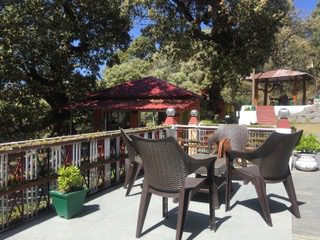
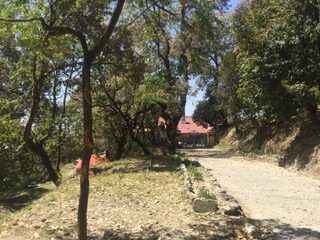
They have been preserved not as trophies but to tell us the story of the grandeur of wildlife that inhabited these regions of Garhwal. It is a call to protect our ecology and our forests. Sunder Lal Bahuguna, the renowned environmentalist and leader of the Chipko (tree-hugging) movement, fought to preserve the forests in Garhwal.
Polished and shining, the mess’ billiard room, ballroom and dining hall look spic and span. One chair at the dining table is permanently vacant, with the crockery and cutlery set out for dinner. The ghost guest (a missing officer) is believed to occupy it. Nobody has ever broken the custom.
Lansdowne is a quiet place. It’s not a place for fun, fast food and restaurants. Bustling markets, restaurants or quaint streets, like most popular hill stations, are missing too.
There is a sense of time having stopped somewhere in these hills.
Its very isolation is its attraction. There is a sense of time having stopped somewhere in these hills. Chapels and churches made of grey stone stand witness to a vibrant military life that throbbed here a century and a half ago.
Grand and great-grandchildren of British officers, who served these terrains, have written exciting stories on the Internet. These stories connect us to real-time. Photographs from the past authenticate their presence.
We walked up to St Mary’s Church, built during the colonial period and made of grey stones with a large bell hanging outside. Its quaintness is most attractive. My mind travelled to the past, re-imagining the sahibs and memsahibs, formally dressed, attending church service. Miles away from their homes in England, trying hard to carry out Imperial instructions.
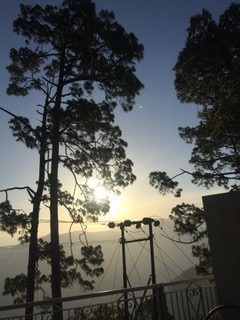
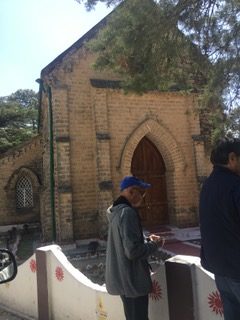
From a curious name like Tip-n-Top viewpoint, we can see why Lansdowne is well-known for its scenic beauty…
From a curious name like Tip-n-Top viewpoint, we can see why Lansdowne is well-known for its scenic beauty, weather, and peaceful surroundings. We savoured the enchanting views of the Himalayas, with majestic sunrise and sunset from different viewpoints. The Chaukhamba and Trishul peaks of the Garhwal Himalayas are visible from here.
The sunset is stunning.
Ironically, the sun had long set on the British Empire.
Photos by the author

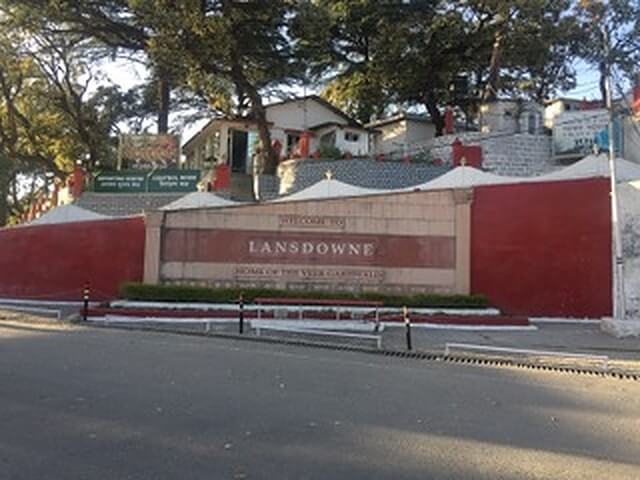




 By
By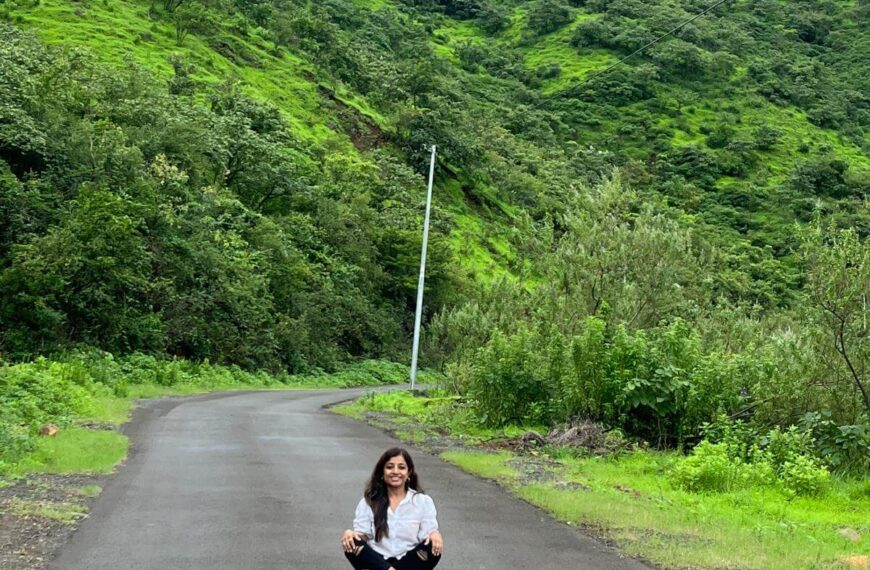


Had read a lot about this serene place nestled in pine and oak forests in Uttarakhand, a place where time seems to have stopped. A place on my to-go list.
The author has brought Lansdowne alive. A very well crafted piece evoking the colonial past and eeriness that goes with its name. Just loved reading it and feeling doubly encouraged to spend a couple of quiet days serenading and soaking in all the tranquility and the birdsong, which some avid birders who have visited this place swear by.
Thanks, Prof. for this wonderful piece